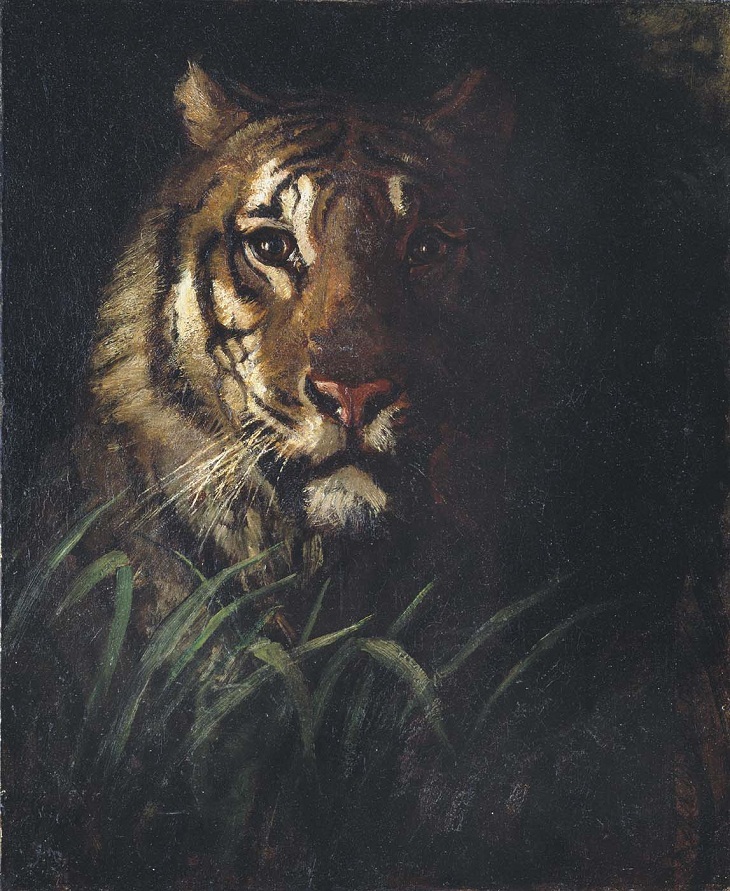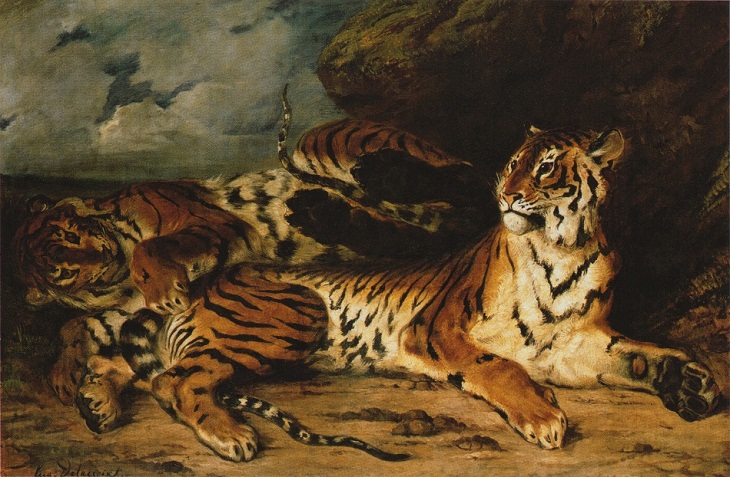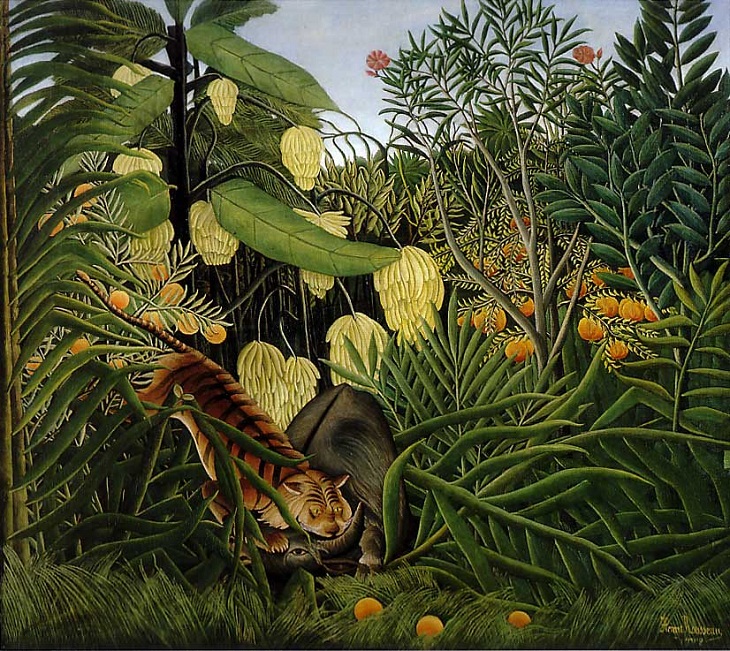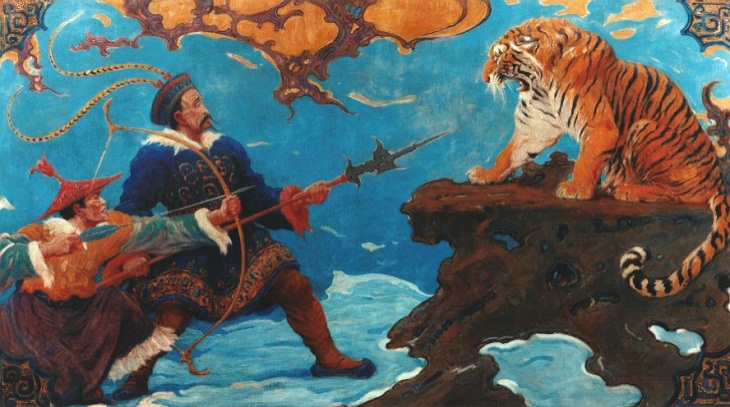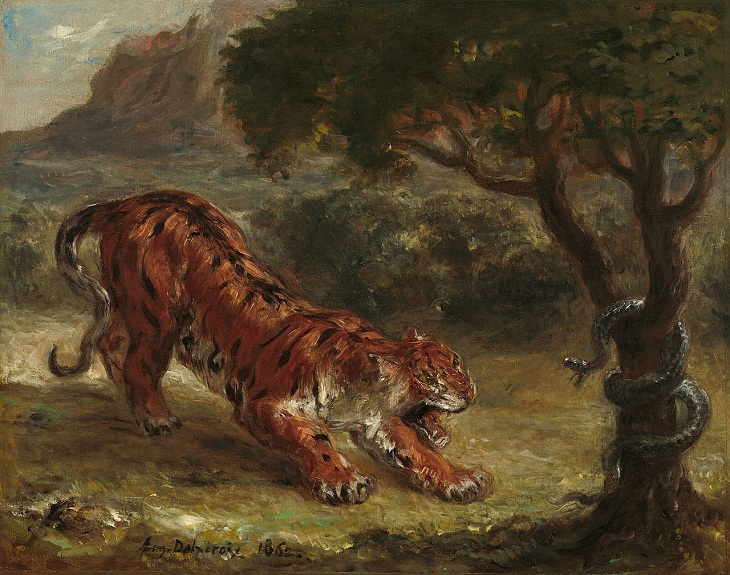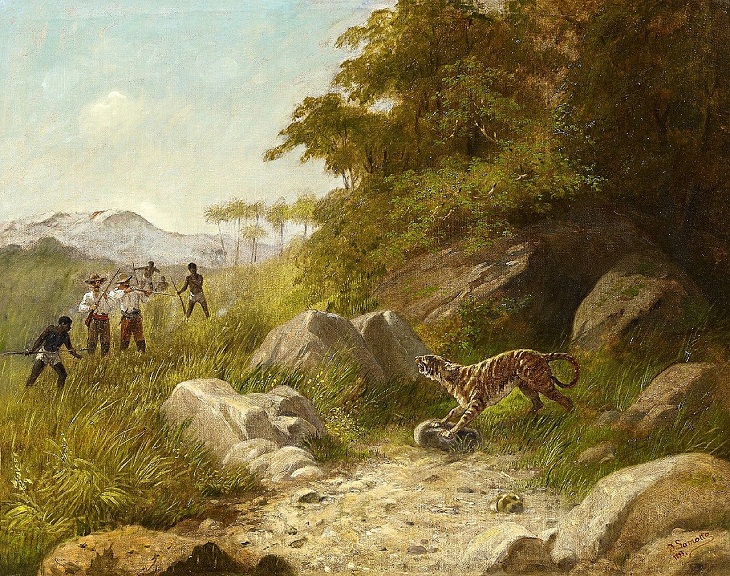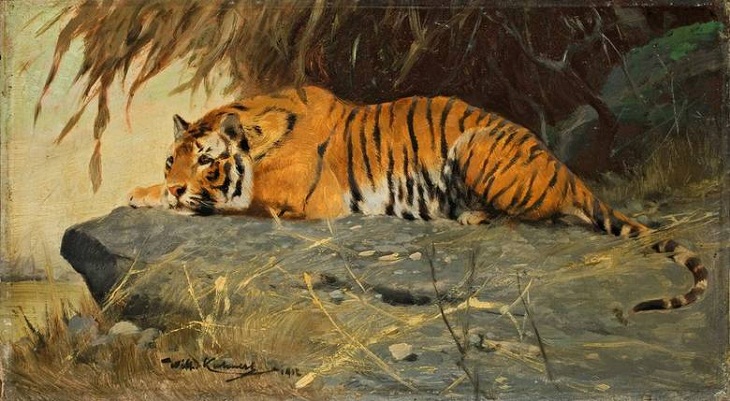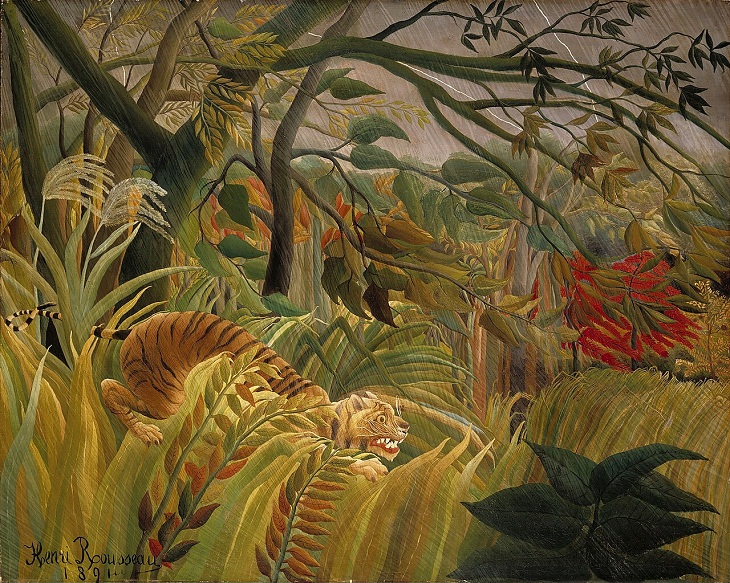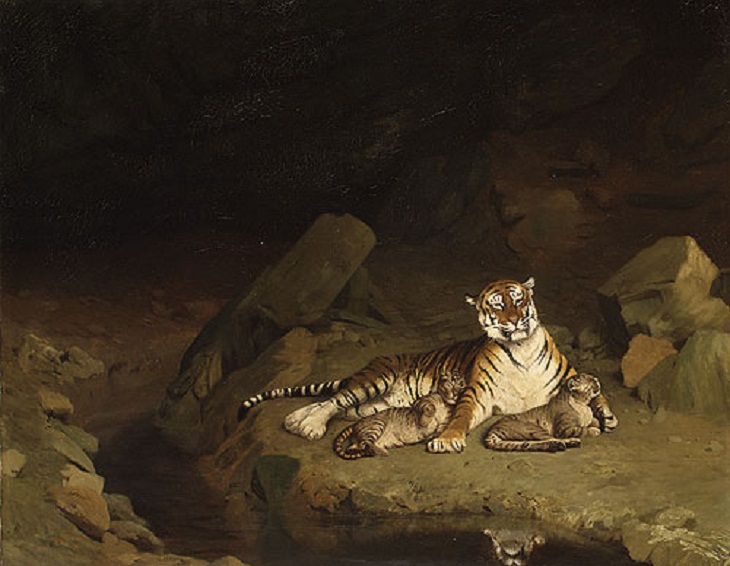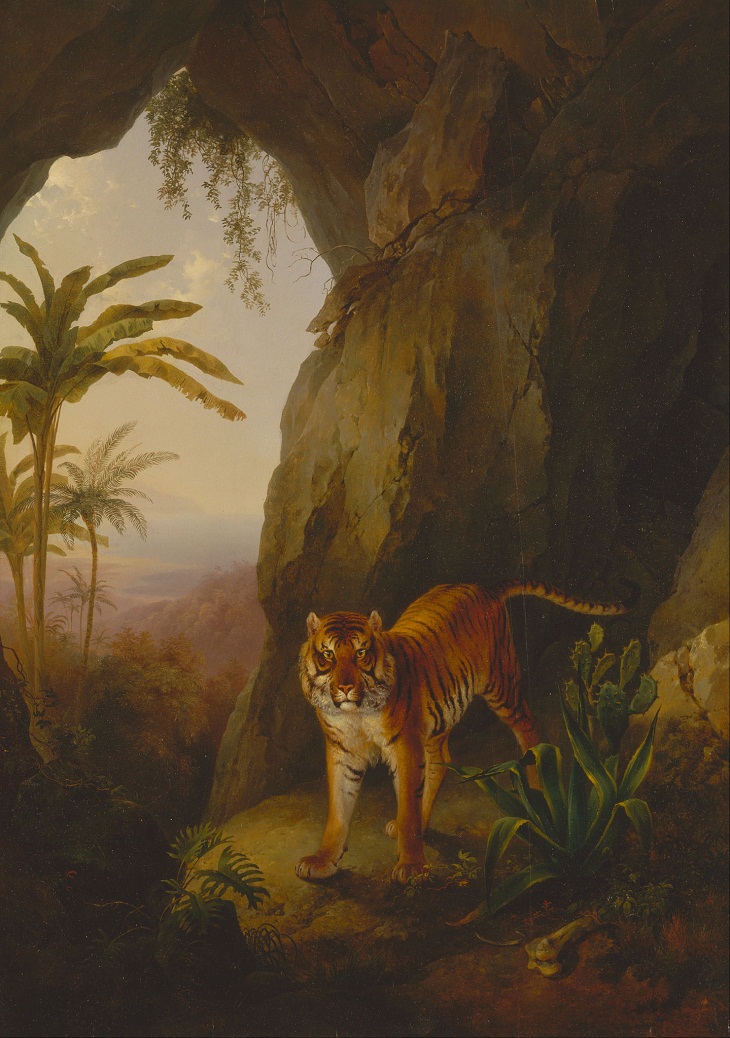Tigers, with their grace, strength, and enigmatic allure, have inspired artists throughout history to capture their majestic essence on canvas. From ancient civilizations to contemporary art, tiger paintings have transcended time and cultures, leaving an indelible mark on the artistic landscape. Tiger paintings not only offer a visual representation of these majestic beasts but also serve as cultural artifacts, reflecting humanity's deep fascination with the natural world and our intricate relationship with these apex predators.
“Tiger's Head” (circa 1874) by Abbott Handerson Thayer
Symbolizing Power and Strength in the East
In the East, tigers have long symbolized strength and power, commanding both fear and respect. Asian art and literature use them as potent symbols of authority. In Chinese culture, the character denoting "king" resembles the distinctive markings on a tiger's forehead, solidifying the association between these majestic felines and power. Additionally, various martial arts methods have also drawn influence from the graceful, powerful movements of tigers.
“A Young Tiger Playing with its Mother” (1830) by Eugène Delacroix
Although tigers are not native to Japan, the arrival of traveling monks from China introduced the country to magnificent paintings portraying these awe-inspiring creatures. In the 16th century, such artwork gained immense popularity in Japan. Local artists, captivated by the sheer size and might of tigers, began creating imaginative scenes featuring these exotic animals.
Tigers also held a profound significance in Hindu devotion. Illustrations from the 19th century depict yogis levitating above tiger skin mats, which were believed to prevent the dissipation of vital energy into the earth. This portrayal underscores the reverence with which the apex predators were regarded in Hindu culture.
“The Tiger Hunt” (1615 or 1616) by Peter Paul Rubens
“Combat of a Tiger and a Buffalo” (1908) by Henri Rousseau
For generations, the tiger has been associated with strength, power, and spirituality throughout the East, serving as a profound symbol of respect and inspiration.
From Disdain to Admiration: The Evolution of Tiger Perception in the West
During the early 17th century, tigers made their way into the consciousness of Europeans, initially encountered in zoos. Even King James I had one among the prized animals housed in his royal menagerie at the Tower of London. However, well before these encounters, writers were already fixated on the animal's strength and ferocity. In Shakespeare's play Henry V, the warrior king urged his troops to "imitate the action of the tiger" on the battlefield.
“Manchurian Tiger holding Hunters at bay” (1917) by Charles R. Knight
“Tiger and Snake” (1862) by Eugène Delacroix
It was not until the late 18th century that an artist truly grasped the inherent beauty of tigers. Poet William Blake captured their allure in his 1794 poem, "The Tyger":
Tyger Tyger, burning bright, In the forests of the night; What immortal hand or eye, Could frame thy fearful symmetry?
“Tiger hunt” (1897) by J. Lamotte
“Tiger Lying On A Rock Plateau” (1912) by Wilhelm Kuhnert
In an era preceding Charles Darwin's revelations about the harshness of nature through survival and evolution, Blake began to comprehend how the untamed world could possess both exquisite perfection and the potential for destruction.
“A Tiger Prowling in the Snow” (1912) by Hugo Ungewitter
“Tiger in a Tropical Storm” (1891) by Henri Rousseau
In the late nineteenth century, the allure of exotic lands and creatures captivated the French public. Responding to this fascination, post-impressionist artist Henri Rousseau created "Surprise!" in 1891. This renowned painting, currently exhibited at London's National Gallery, depicts a menacing feline stealthily navigating through the jungle.
Although Rousseau never encountered a tiger in its natural habitat, it is likely that his inspiration derived from earlier illustrations and visits to Parisian botanical gardens. His subsequent works feature tigers, either in pursuit of their prey or being pursued by them.
The Enduring Significance of Tiger Paintings
Tiger paintings throughout history stand as a testament to the enduring allure and universal fascination humans have had with these awe-inspiring creatures. Beyond their artistic significance, tiger paintings also play a vital role in raising awareness about the conservation of these endangered species. Today, as tiger populations face grave threats and conservation efforts strive to protect these endangered creatures, tiger paintings take on renewed significance. They serve as a poignant reminder of the urgent need to protect these magnificent creatures and their habitats, ensuring their survival for generations to come.
“Tiger and Cubs” (1884) by Jean-Léon Gérôme
“Tiger in a Cave” (circa 1814) by Jacques-Laurent Agasse
As we appreciate the rich tapestry of tiger paintings woven throughout history, we are reminded of our shared responsibility to safeguard these creatures and the delicate ecosystems they inhabit. So let us continue to cherish the brushstrokes of the past, allowing tiger paintings to roar through time, reminding us of the profound impact these creatures have had on our collective consciousness.

